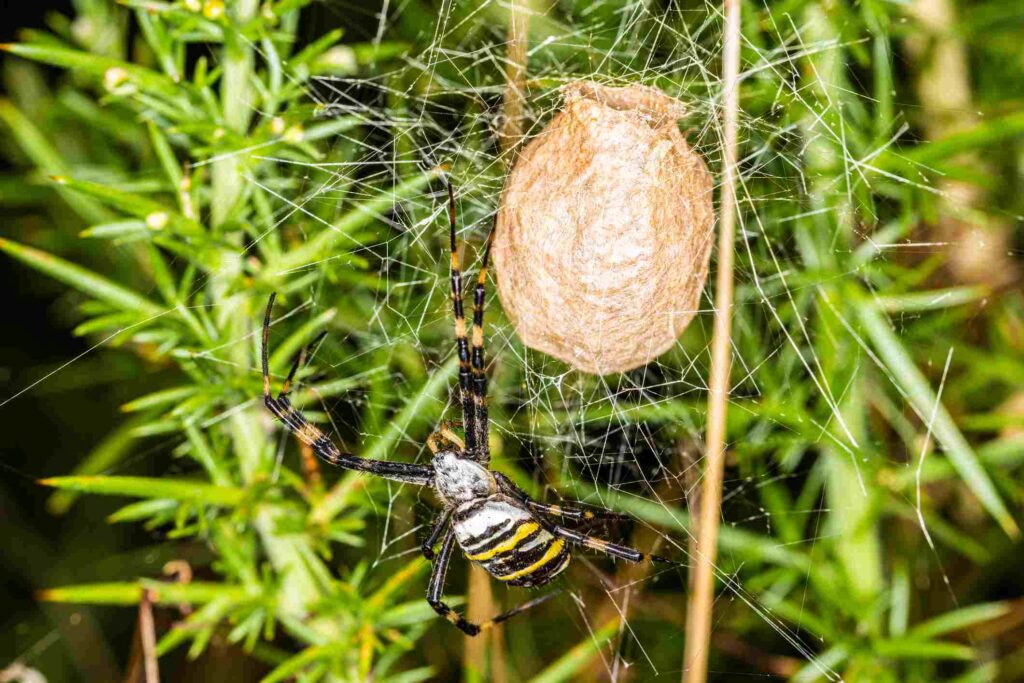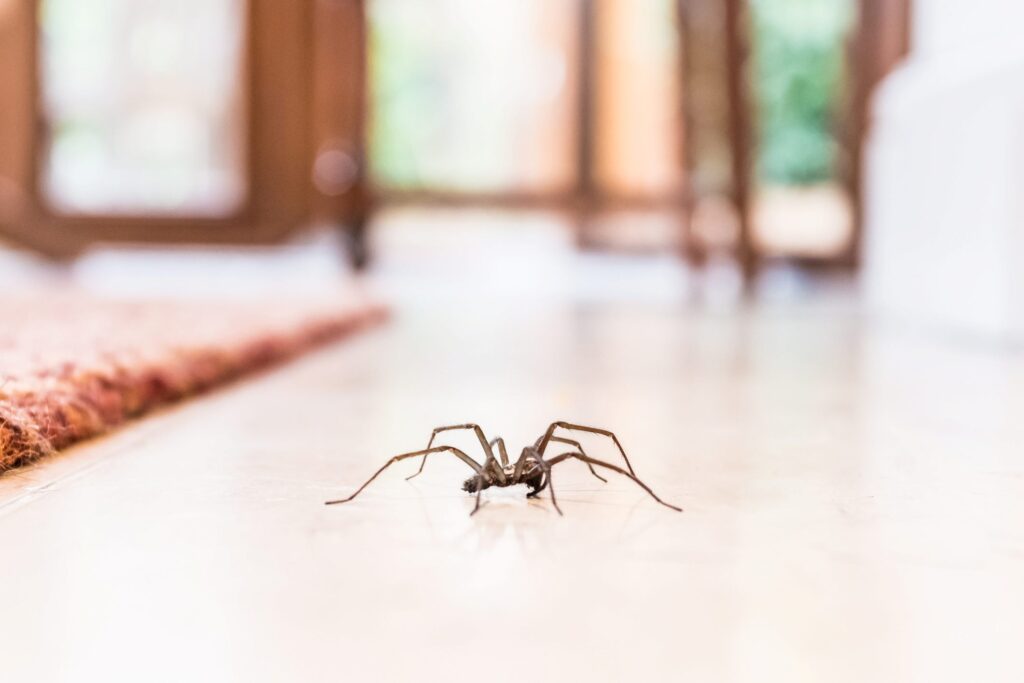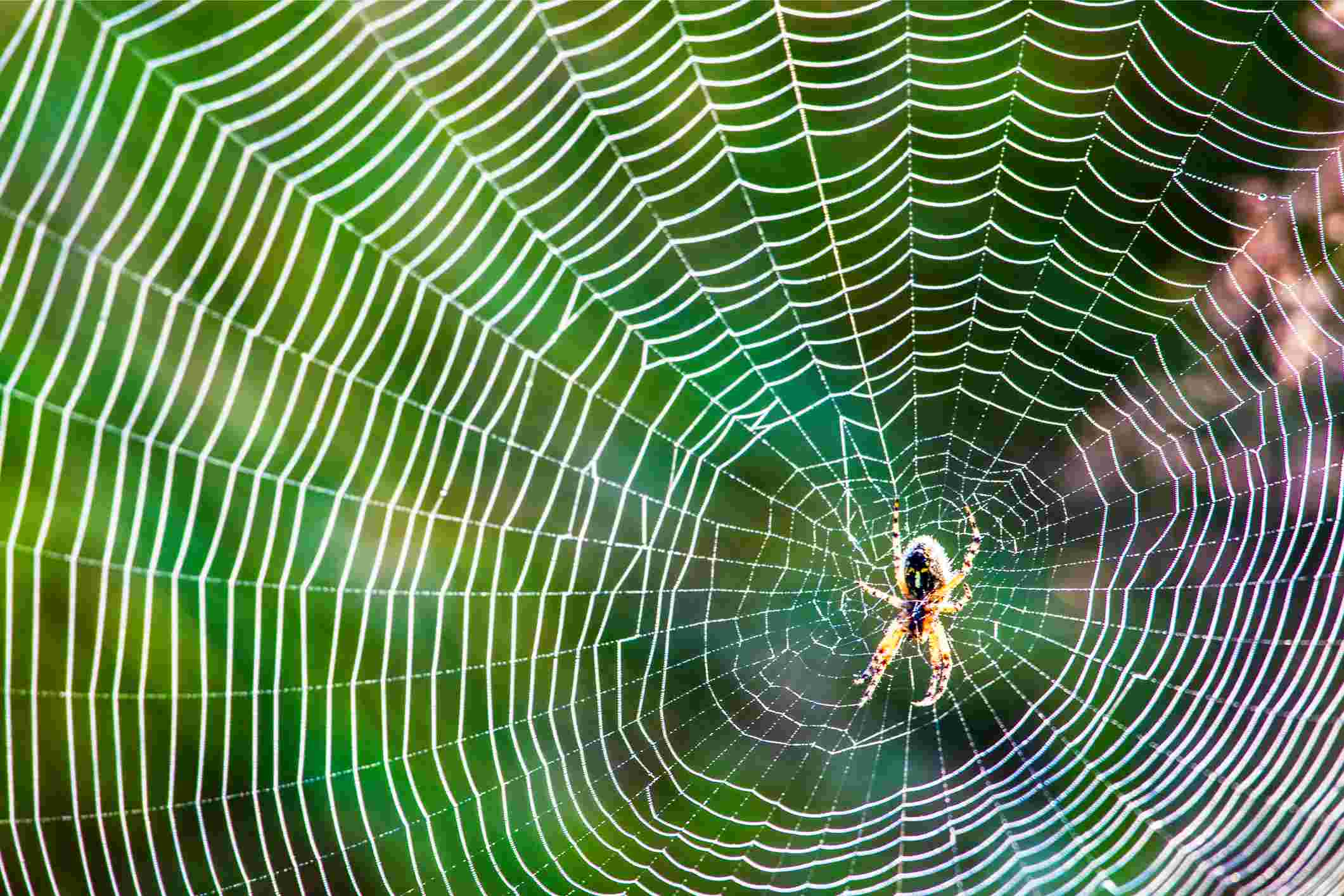Few things are more unsettling than finding an eight-legged visitor creeping around your home. While spiders may not be the most pleasant pest to discover lurking in your cabinets or couch crevices, these incredible creatures are much more than meets the eye. But beyond their vital role in our ecosystem, how much do we know about those creepy crawlies that make their way into our houses? When you see one, will you ever see that same spider again?
The experts at Dewey Pest and Termite Control are here to educate you on the life cycle of a spider, including how to identify their ages, typical behaviors, and what to do if you discover an arachnid inhabiting your home.
Spider Life Cycle Stages

Unless you’re a pest aficionado like us here at Dewey Pest and Termite Control, you may be unaware of what life looks like for some of the most common household spiders. Understanding an arachnid’s world can help you navigate finding one in your home, including key information relating to how they survive and reproduce.
Phase 1: Spider Eggs
Spiders’ mating season occurs each autumn from approximately September to November. After mating, the female spider lays eggs inside a sac made from the silk she uses to create webs that can hold as many as 1,000 spider eggs. Depending on the species, female spiders may protect their egg sacs in different ways—some hide the sacs in safe spots and leave them, while others carry them around until the eggs are ready to hatch, such as wolf spiders. Many spiders lay eggs multiple times, producing hundreds of thousands of young.
As a lady arachnid is unlikely to stray far from its spider web, staying still to conserve the energy needed to lay eggs, it is the males who you are likely to see scurrying around seeking their mate. However, a plumper-looking spider residing exclusively by its web may be an expectant mother. If you believe a pregnant spider has nested in your home, experts recommend not smashing it. Otherwise, you could unleash hundreds of baby spiders into your living space. Instead, call in pest control.
Phase 2: Spiderlings
When spider eggs hatch, baby spiders, known as spiderlings, come out. These tiny spiders may stay near their mother for several weeks or spread out immediately, depending on their species. Some crawl away on their little legs, while others use a method called ballooning—releasing thin silk threads from their spinnerets, the wind picks them up and carries them to new spots.
Phase 3: Adulthood
The final phase in a spider’s life cycle is adulthood. Spiders become adults after molting five to 10 times, at which point their exoskeleton is fully formed. While most spiders have a life span of about a year, some—like the wolf spider commonly found in Utah—can live up to two years. Adult spiders play a key role in reproduction, meaning it is crucial to address them to disrupt the spider life cycle. Focusing only on egg sacs, spiderlings, or adult spiders may not be enough to control a spider infestation fully.
Frequently Asked Questions About Spiders

What Types of Spiders Are Found in the Home?
You may be surprised to learn that of the tens of thousands of spider species, few are biologically suited to live inside homes equipped with modern heating and air conditioning. Below are some of the most common varieties of spiders found in American households:
- Cross spider. These are common orb weaver spiders found in California homes, often seen near houseplants. Harmless to humans, they feed on garden pests and don’t bite.
- Hobo spider. One of the larger house spiders, these thrive in damp, plant-filled spaces and are easily recognized by their unique look. Despite their nickname as “aggressive house spiders,” they are highly unlikely to bite.
- Black widow. The black widow is one of the few dangerous household arachnids. Its highly toxic venom is often found in dark, isolated places like sheds or wood piles, and it thrives in warm regions.
- Wolf spider. Wolf spiders are active hunters who chase their prey instead of spinning webs. Females carry their egg sacs on their backs, later carrying their babies. While bites are possible, North American wolf spiders are not dangerous.
- American house spider. These big, dark spiders often hang out on house rafters in sunny spots. They can be a real hassle, biting anyone nearby, including pets that wander inside.
- Brown recluse. Brown recluses hunt insects and smaller spiders without webs, using venom to catch prey. They rarely bite humans unless directly pressed, and bites may cause swelling, redness, or wounds that heal slowly. Pets are also at risk, and while deaths are rare, bites can lead to discomfort or disfigurement.
Are you worried you’re dealing with an arachnid that could potentially harm you, a loved one, or your pets? Check out our intuitive guide on how to distinguish venomous spiders from harmless species.
How Long Do Spiders Live?
Most spiders have a short life span, typically living for a year or less. However, larger species, like tarantulas, can survive for several years, with some even reaching a decade. Most males perish shortly after mating, while females tend to outlive them, especially in species like the wolf spider or black widow.
You may be wondering—how long do spiders live after giving birth? This entirely depends upon the respective species of arachnid. Females of many species pass away following the production of their final egg sac. Some, however, stay alive for a while longer to look after their young. These females typically survive for one year or, at most, two.
What Do Spiders Eat?
Spiders are versatile predators that consume insects and other arthropods by entrapping them in their webs. Some types of spiders, like wolf spiders, crab spiders, and jumping spiders, don’t spin webs, instead roaming across soil or plants to hunt. These less-noticeable spiders play a key role in managing pest populations, including beetles, caterpillars, leafhoppers, and aphids.
How To Get Rid of Spiders
Fully grown spiders can mate and multiply, so it’s crucial to remove them to break the spider life cycle. Focusing only on egg sacs, young spiders, or adults might leave gaps in your pest control efforts, reducing effectiveness. Spiders at any stage of development can be a problem for your home and sense of comfort. Managing arachnids who have infiltrated your living space may take the work of a professional who can tackle the situation with tried and tested pest control methods.
Take Control of Spider Infestations With Dewey Pest and Termite Control
For reliable pest control services to tackle your arachnid issues, choose Dewey Pest and Termite Control. With over 90 years of experience serving California communities, our skilled team will carefully check your property and use effective treatments that are harmless to humans and pets to keep unwanted pests away.
Contact us today to learn more about our spider control solutions!

